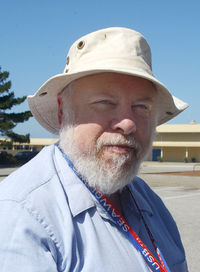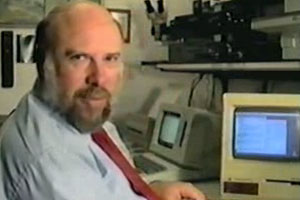

Pad uses "portals" - magnifying glasses that can peer intoĪnd roam over different parts of this single infinite shared desktop Occupies a well defined region on the Pad surface. Objects are organized geographically every object Information plane that is shared among users, much as a network file Such applications as electronic marketplaces, information services,Īnd on-line collaboration. It provides an intuitive base for the support of The ongoing Pad project uses a spatial metaphor for computer This end, we are developing a new computer interface model called Tapping into our natural spatial and geographic ways of thinking. We believe that navigation in information spaces is best supported by Everything pixelated like hell, but with some of the scalable interface components that Apple and Microsoft and probably others are working on, you could perhaps even do away with the pixelation. It was totally black and white (monochrome black and green, actually), but it looked really nifty. There was a dot near the end of a sentence, and when you zoomed in, it was a spreadsheet with the financials. The demo showed something like an article or a financial statement. This is also very similar to a demo I saw on a video for SIGGraph 1993.

If there was some graphical element that demonstrated more clearly to these users exactly what happens to their document, it would be a godsend for grandmas and other new computer users. It's obvious to you and me, but to them it's a completly different storage repository. The box that opens up when a user hits "save" doesnt look anything like their desktop or "my documents" to many new computer users. Where the problem is for many of them is understanding what happens to their letter when they hit "save". They click the icon that looks like a letter and lo and behold, they can write a letter. My point is that this guy and a lot of other computer guys don't seem to realise that most users have no problem understanding applications. Sometimes they'd show me the list of recently opened documents hanging right off the file menu "in Word." I would ask them some more questions and they'd show me "exactly where it is" by clicking Open from the File menu of word and showing me "where the doument should be"." right there in word." Naturally I've asked them "where did you last see it?" A surpisingly common answer is, "it's in Word." I've been asked on several occasions to help people find their missing documents. So he would essentially abolish the first two items, or at least keep them largely invisible from the user.Īctually, I've seen more confusion over the last two items. You can easily imagine a company using subsidiary Y in the opposite way, to artificially inflate corporation income if necessary to meet Wall Street's expectations.Īs I recall from years ago, Jeff used to claim that the division between "Operating System", "Application" and "Content" was big learning barrier and slowed down computer use. Or in some cases, when there is a negative net balance, they ask for bailout money from the government (and that money sure didn't come from taxes the corporation paid). They sell them in the US for $97 a pair, and the net balance is zero. But since subsidiary Y is not officially part of the multinational, so it appears the company is LOSING $47 on each pair of shoes. Then subsidiary Z sells those same shoes to subsidiary X for $50 a pair. Subsidiary Y sells the shoes to subsidiary Z for $3 a pair. Then they have subsidiary Z, a tiny, unofficial office in the Virgin Islands. In some third world country, they have subsidiary Y, which produces, say, tennis shoes. In case you aren't familiar with the scheme, the multinational company has subsidiary X in the US, its main headquarters. Almost all multinational corporations do this it's no secret. The real problem is triangle trading schemes that let corporations sell products to themselves at a "loss" so they can claim they made no money. And unless someone blows the whistle on them, they will gladly sell you products made by slave labor. And sometimes pesky environmental and labor laws of one country get in the way, so they just set up in a country without all those restrictions. I don't think multinational corporations really intend to destroy organized labor or the environment, but they do intend to make money.
#Jef raskin how to
It's amazing that Coca-Cola can actually produce soda, what with all the time they spend figuring out how to screw their employees, despoil the environment and generally bring about armageddon. And here I thought they were in the business of actually producing products. But, predominantly, Multi-nationals are in the business of reducing wages, labour and environmental standards, and exploitation.


 0 kommentar(er)
0 kommentar(er)
